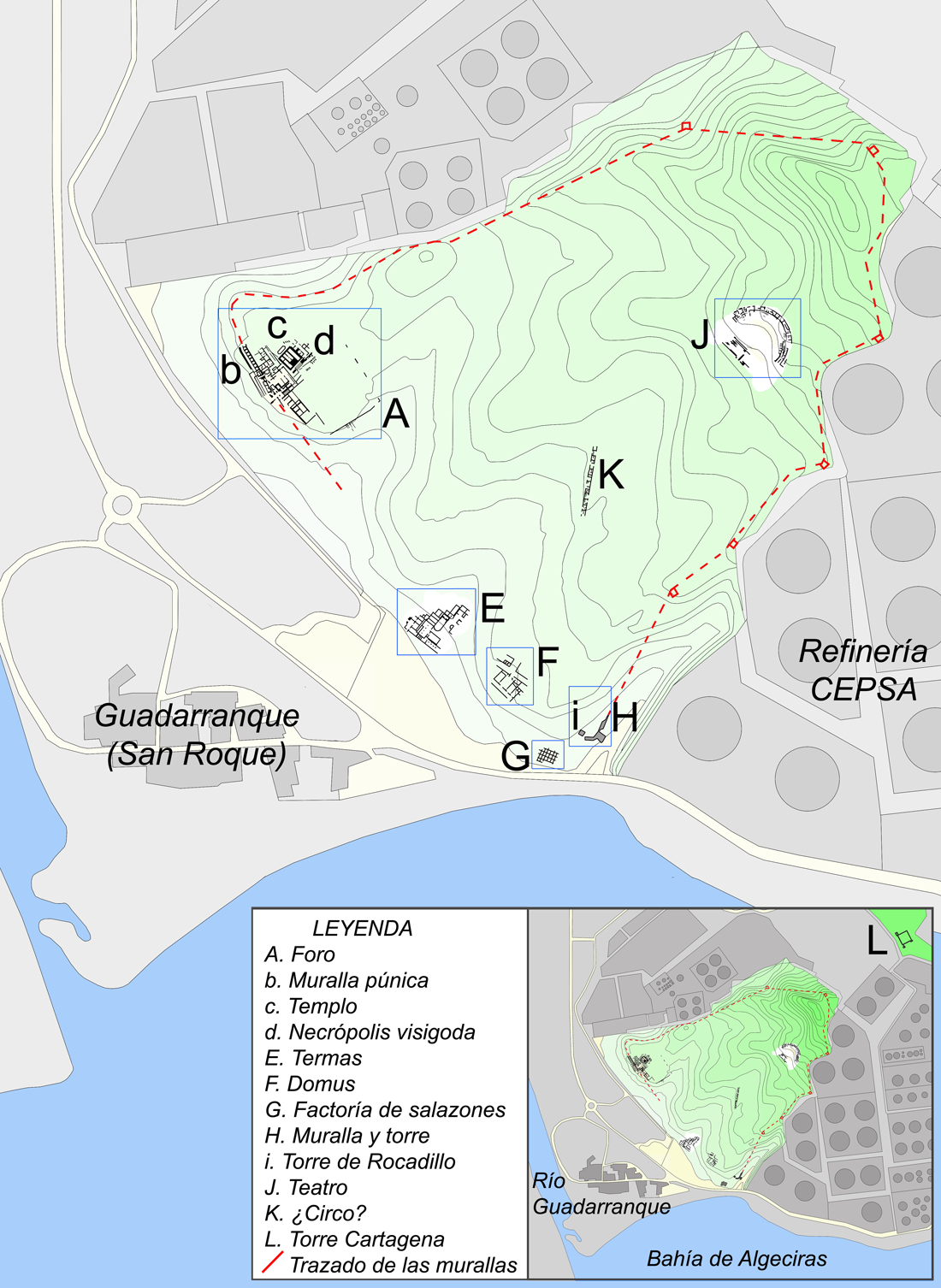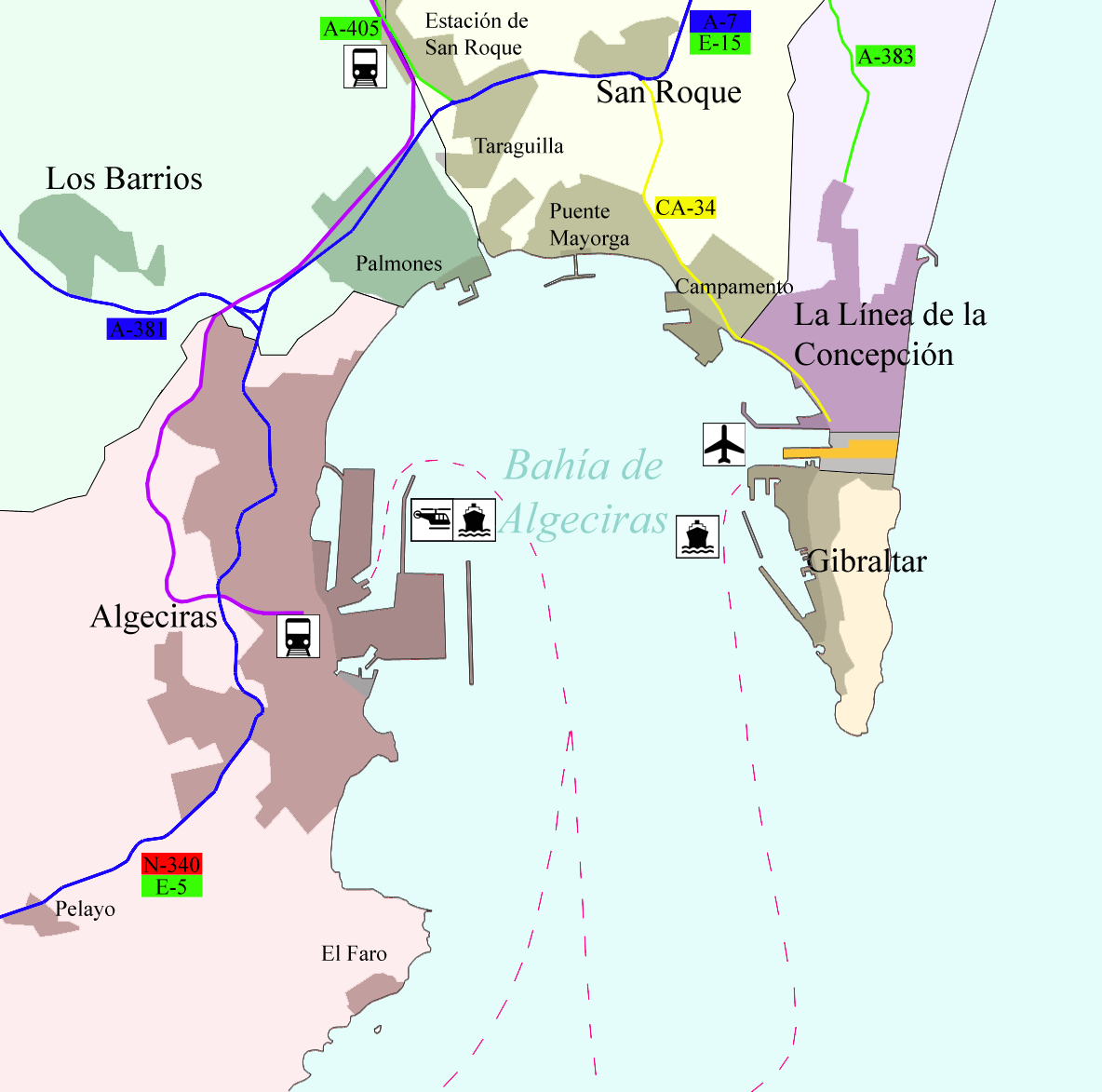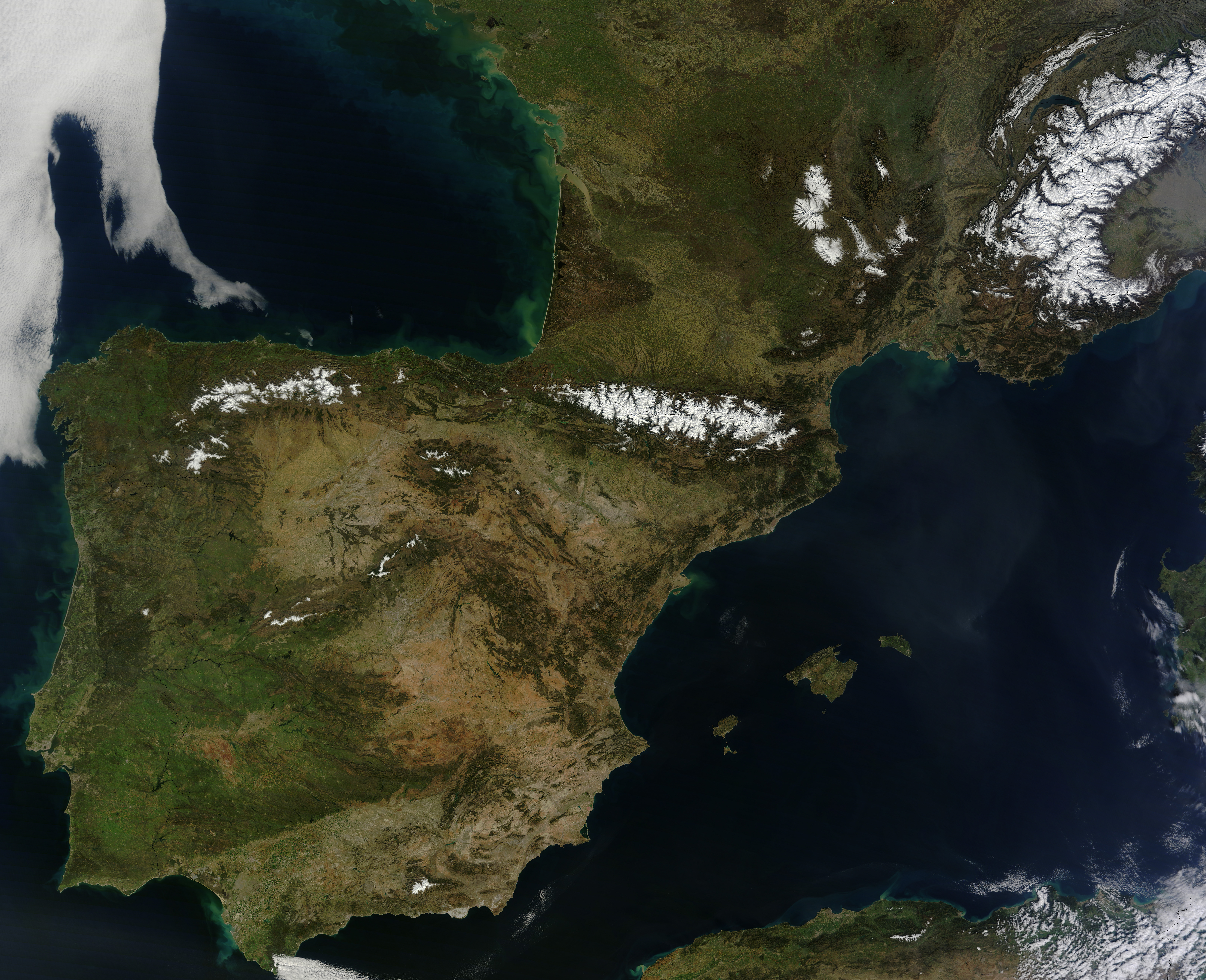|
Mastia
Mastia (or ''Massia of the Tartessians'') is the name of an ancient Iberian settlement, belonging to the Tartessian confederation, once located in southeastern Spain. It has traditionally been associated with the city of Cartagena (Spain). The association has been made principally from the analysis of classical sources in the early 20th century by Adolf Schulten. The first description of the city of Mastia appears in a poem entitled ''Ora Maritima'' (''Sea Coasts'') by the Latin poet Rufius Festus Avienius from the 4th-century AD. The poem claims to contain borrowings from the mythic 6th-century BC Massiliote Periplus. The description of Avienus reads: However, there is currently no conclusive evidence that the Mastia of Avienus refers to the same site where Cartagena will be founded. Context and other geographic descriptions that precede and follow these lines suggest that it could refer to the same location. Some scholars locate Mastia somewhere near the ancient city of Carte ... [...More Info...] [...Related Items...] OR: [Wikipedia] [Google] [Baidu] |
Cartagena, Spain
Cartagena () is a Spanish city and a major naval station on the Mediterranean coast, south-eastern Iberia. As of January 2018, it has a population of 218,943 inhabitants, being the region's second-largest municipality and the country's sixth-largest non-provincial-capital city. The metropolitan area of Cartagena, known as ''Campo de Cartagena'', has a population of 409,586 inhabitants. Cartagena has been inhabited for over two millennia, being founded around 227 BC by the Carthaginian Hasdrubal the Fair as ''Qart Hadasht'' ( phn, 𐤒𐤓𐤕𐤟𐤇𐤃𐤔𐤕 QRT𐤟ḤDŠT; meaning "New Town"), the same name as the original city of Carthage. The city had its heyday during the Roman Empire, when it was known as ''Carthago Nova'' (the New Carthage) and ''Carthago Spartaria'', capital of the province of Carthaginensis. Much of the historical significance of Cartagena stemmed from its coveted defensive port, one of the most important in the western Mediterranean. Cartagena ... [...More Info...] [...Related Items...] OR: [Wikipedia] [Google] [Baidu] |
Tartessos
Tartessos ( es, Tarteso) is, as defined by archaeological discoveries, a historical civilization settled in the region of Southern Spain characterized by its mixture of local Paleohispanic and Phoenician traits. It had a proper writing system, identified as Tartessian, that includes some 97 inscriptions in a Tartessian language. In the historical records Tartessos ( el, Ταρτησσός) or Tartessus appears as a antecessor semi-mythical harbor city and the surrounding culture on the south coast of the Iberian Peninsula (in modern Andalusia, Spain), at the mouth of the Guadalquivir River. It appears in sources from Greece and the Near East starting during the first millennium BC. Herodotus, for example, describes it as beyond the Pillars of Heracles (Strait of Gibraltar). Roman authors tend to echo the earlier Greek sources but from around the end of the millennium there are indications that the name Tartessos had fallen out of use and the city may have been lost to flooding ... [...More Info...] [...Related Items...] OR: [Wikipedia] [Google] [Baidu] |
Adolf Schulten
Adolf Schulten (27 May 1870 – 19 March 1960) was a German historian and archaeologist. Schulten was born in Elberfeld, Rhine Province, and received a doctorate in geology from the University of Bonn in 1892. He studied in Italy, Africa and Greece with support from the Institute of Archaeology. After obtaining the chair of ancient history at the University of Erlangen, he continued his work in Spain with great dedication and to this day is considered a key influence upon archaeological study in Spain. Schulten led the 1905-12 excavations of the Celtiberian city of Numantia and the Roman camps nearby and in 1924 searched without success for the location of Tartessos. Starting in 1948 he worked on the ruins of Tarraco and in the localities of Mainake, Munda and Segeda. In recognition of his work, Schulten received a doctorate honoris causa from the University of Barcelona and the Grand Cross of the Civil Order of Alfonso X, the Wise The Civil Order of Alfonso X the Wi ... [...More Info...] [...Related Items...] OR: [Wikipedia] [Google] [Baidu] |
Avienius
Postumius Rufius Festus Avienius (sometimes erroneously Avienus) was a Latin writer of the 4th century AD. He was a native of Volsinii in Etruria, from the distinguished family of the Rufii Festi. Avienius is not identical with the historian Festus. Background Avienius made somewhat inexact translations into Latin of Aratus' didactic poem ''Phaenomena''. He also took a popular Greek poem in hexameters, ''Periegesis,'' briefly delimiting the habitable world from the perspective of Alexandria, written by Dionysius Periegetes in a terse and elegant style that was easy to memorize for students, and translated it into an archaising Latin as his ''Descriptio orbis terrae'' ("Description of the World's Lands"). Only Book I survives, with an unsteady grasp of actual geography and some far-fetched etymologies: see Ophiussa. He wrote '' Ora Maritima'', a poem claimed to contain borrowings from the 6th-century BC '' Massiliote Periplus''. Donnchadh Ó Corráin Chapter 1 "Prehistoric ... [...More Info...] [...Related Items...] OR: [Wikipedia] [Google] [Baidu] |
Massiliote Periplus
The Massaliote Periplus or Massiliote Periplus is a theoretical reconstruction of a sixth-century BC periplus, or sailing manual, proposed by Adolf Schulten Adolf Schulten (27 May 1870 – 19 March 1960) was a German historian and archaeologist. Schulten was born in Elberfeld, Rhine Province, and received a doctorate in geology from the University of Bonn in 1892. He studied in Italy, Africa an ....The Extraordinary Voyage of Pytheas the Greek: The Man Who Discovered Britain (2001), Walker & Co; (2002 Penguin ed. with new post-script: ) Schulten believed a Massiliote Periplus had been versified in the lines of the '' Ora Maritima'' by Avienius. Schulten dated it to the 6th century BC. It describes a voyage from Oestriminis, modern Pointe du Raz, to Massalia, modern Marseille. Its existence has been denied by other scholars. References Peripluses History of navigation Lost books Ancient Greek geography Ancient Roman geography 6th-century BC books Ancient Mass ... [...More Info...] [...Related Items...] OR: [Wikipedia] [Google] [Baidu] |
Carteia
Carteia ( grc, Καρτηίᾳ) was a Phoenician and Roman town at the head of the Bay of Gibraltar in Spain. It was established at the most northerly point of the bay, next to the town of San Roque, about halfway between the modern cities of Algeciras and Gibraltar, overlooking the sea on elevated ground at the confluence of two rivers, nowadays called Guadarranque and Cachon. According to Strabo, it was founded around 940 BC as the trading settlement of ''Kʿrt'' (meaning "city" in the Phoenician language; compare Carthage and Cartagena). The area had much to offer a trader; the hinterland behind Carteia, in the modern south of Andalusia, was rich in wood, cereals, oranges, lemons, lead, iron, copper and silver. Dyes were another much sought-after commodity, especially those from the murex shellfish, used to make the prized Tyrian purple. Strabo and Pomponius Mela, mention that some believe that Carteia used to be the Tartessos. Pliny the Elder writes that Carteia was call ... [...More Info...] [...Related Items...] OR: [Wikipedia] [Google] [Baidu] |
Bay Of Algeciras
The Bay of Gibraltar ( es, Bahía de Algeciras), is a bay at the southern end of the Iberian Peninsula. It is around long by wide, covering an area of some , with a depth of up to in the centre of the bay. It opens to the south into the Strait of Gibraltar and the Mediterranean Sea. The shoreline is densely settled. From west to east, the shore is divided between the Spanish municipalities of Algeciras, Los Barrios, San Roque, La Línea de la Concepción and the British Overseas Territory of Gibraltar. The larger part of the shoreline is Spanish territory, with part of the eastern half of the bay belonging to Gibraltar. The east and west entrances to the bay are marked respectively by the Europa Point Lighthouse at Europa Point, Gibraltar and the Punta Carnero Lighthouse in Punta Carnero to the west of Algeciras. History The area around the Bay of Gibraltar has been inhabited for millennia and the bay itself has been used by merchant shipping for at least 3,000 ye ... [...More Info...] [...Related Items...] OR: [Wikipedia] [Google] [Baidu] |
Iberian Peninsula
The Iberian Peninsula (), ** * Aragonese and Occitan: ''Peninsula Iberica'' ** ** * french: Péninsule Ibérique * mwl, Península Eibérica * eu, Iberiar penintsula also known as Iberia, is a peninsula in southwestern Europe, defining the westernmost edge of Eurasia. It is principally divided between Spain and Portugal, comprising most of their territory, as well as a small area of Southern France, Andorra, and Gibraltar. With an area of approximately , and a population of roughly 53 million, it is the second largest European peninsula by area, after the Scandinavian Peninsula. Name Greek name The word ''Iberia'' is a noun adapted from the Latin word "Hiberia" originating in the Ancient Greek word Ἰβηρία ('), used by Greek geographers under the rule of the Roman Empire to refer to what is known today in English as the Iberian Peninsula. At that time, the name did not describe a single geographical entity or a distinct population; the same name was ... [...More Info...] [...Related Items...] OR: [Wikipedia] [Google] [Baidu] |
Hecataeus Of Miletus
Hecataeus of Miletus (; el, Ἑκαταῖος ὁ Μιλήσιος; c. 550 BC – c. 476 BC), son of Hegesander, was an early Greek historian and geographer. Biography Hailing from a very wealthy family, he lived in Miletus, then under Persian rule in the satrapy of Lydia. He was active during the time of the Greco-Persian Wars. After having travelled extensively, he settled in his native city, where he occupied a high position, and devoted his time to the composition of geographical and historical works. When Aristagoras, acting tyrant of Miletus, held a council of leading Ionians at Miletus to organize a revolt against Persian rule, Hecataeus tried in vain to dissuade his countrymen from the undertaking. In 494 BC, when the defeated Ionians were obliged to sue for terms, he was one of the ambassadors to the Persian satrap Artaphernes, whom he persuaded to restore the constitution of the Ionic cities. Hecataeus is the first known Greek historian and was one of the fir ... [...More Info...] [...Related Items...] OR: [Wikipedia] [Google] [Baidu] |
History Of Cartagena, Spain
History (derived ) is the systematic study and the documentation of the human activity. The time period of event before the invention of writing systems is considered prehistory. "History" is an umbrella term comprising past events as well as the memory, discovery, collection, organization, presentation, and interpretation of these events. Historians seek knowledge of the past using historical sources such as written documents, oral accounts, art and material artifacts, and ecological markers. History is not complete and still has debatable mysteries. History is also an academic discipline which uses narrative to describe, examine, question, and analyze past events, and investigate their patterns of cause and effect. Historians often debate which narrative best explains an event, as well as the significance of different causes and effects. Historians also debate the nature of history as an end in itself, as well as its usefulness to give perspective on the problems of the ... [...More Info...] [...Related Items...] OR: [Wikipedia] [Google] [Baidu] |



.jpg)